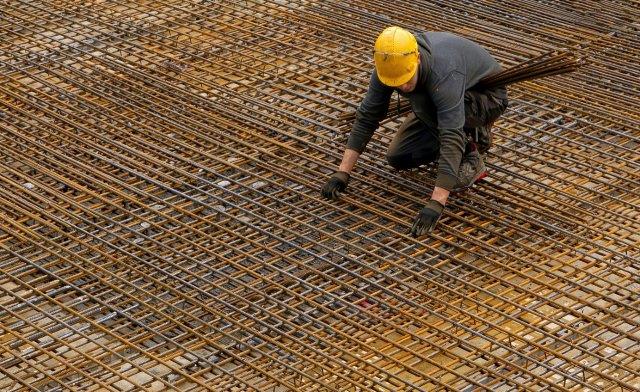

A new concept in self-healing fungal-derived concrete could provide sustainable solution to crumbling infrastructure, according to new research. The material is low polluting and low cost.
The unusual combination of biology meets chemistry comes from Binghamton University, who have devised a low-cost, pollution-free and sustainable approach to fixing concrete on pavements and as part of building structures. The development can allow structures to be repaired so that they last for longer and remain safe for people to access.
Even the smallest of cracks can pose problems to buildings and these can trigger worsening problems. According to Professor Congrui Jin, who led the new study: “If micro-cracks expand and reach the steel reinforcement, not only the concrete will be attacked, but also the reinforcement will be corroded, as it is exposed to water, oxygen, possibly carbon dioxide and chlorides, leading to structural failure.”
These risks inspired the researchers to find a means to heal concrete. In their investigations they came across an unexpected answer: the fungus Trichoderma reesei. T. reesei is an important commercial and industrial micro-organism due to its cellulase production ability.
The researchers discovered that when this fungus is mixed with concrete, it will rest in a dormant state until the first crack appears.
Here the fungal spores, in combination with nutrients, within the concrete start to grow as cracking occurs. This is because water and oxygen seep in. When there is sufficient water and oxygen, the dormant fungal spores germinate, grow considerably and precipitate calcium carbonate, which heals the cracks. Once the crack heals and the water and oxygen supply stops, the fungi stop growing and rerun to the spore state.
A prototype material has been developed and further research is continuing. The research has been published in the journal Construction and Building Materials, with the peer reviewed study headed “Construction and Building Materials.”
More news
- CELEBRATING EXCELLENCE IN THE RESIDENTIAL PROPERTY SECTOR
- PART 4: GIBS PANEL DISCUSSES INTEMEDIATE CITIES ROLE IN AFRICA’S DEVELOPMENT
- EXPOSED AGGREGATE PAVERS COMPLEMENT NEW LIFESTYLE CENTRE
- GIBS PANEL EXPLORES ROLE OF INTERMEDIATE CITIES IN SA’S DEVELOPMENT PART 3
- CITI-CON’S CONCRETE KNOWLEDGE SUCCESSFULLY DEPLOYED ON NEW LANDMARK DEVELOPMENT





